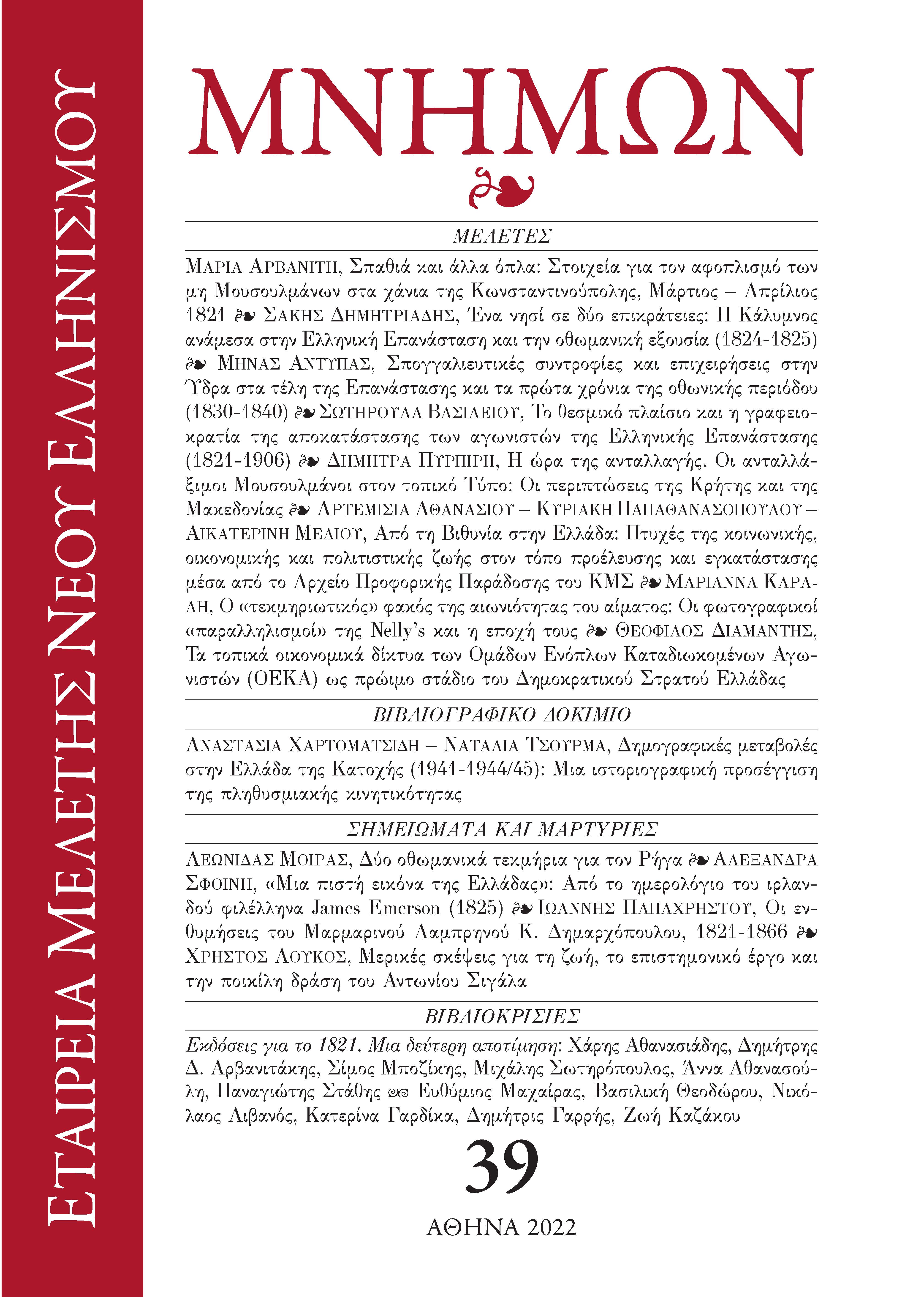THE MOMENT OF THE EXCHANGE. THE MUSLIMS IN THE LOCAL PRESS THE CASE OF CRETE AND MACEDONIA

Abstract
This article refers to an unknown, mutatis mutandis, side of the Greek-Turk¬ish population exchange after the Convention signed between the two countries during the Lausanne Conference in 1923. Its main goal is to examine how local societies experienced the compulsory leaving of the Muslim element from the Greek State. The research is mainly based on the local Press of Macedonia and Crete, two Greek areas from which the majority of the Muslims fell within the terms of the Convention, depart¬ed. Bibliographic references to Oral History and Fiction are also part of this research. The years of the interest are 1923 up to 1925, when the compulsory exchange was almost completed. Emphasis was given to simi¬larities and differentiations between the two cases, as well as to the mod¬ification and alteration of the view and the experience of the Exchange. As months went by and the Greek refugees from Asia Minor kept on coming to the Greek territory, changes on the view of the newspapers might reflect or create (?) a shift of local societies’ point of view about the Muslim ‘‘muchacir’’.
Article Details
- How to Cite
-
PYRPIRI, D. (2024). THE MOMENT OF THE EXCHANGE. THE MUSLIMS IN THE LOCAL PRESS: THE CASE OF CRETE AND MACEDONIA. Mnimon, 39, 113–142. https://doi.org/10.12681/mnimon.37411
- Issue
- Vol. 39 (2022): Mnimon
- Section
- ARTICLES

This work is licensed under a Creative Commons Attribution-NonCommercial-ShareAlike 4.0 International License.
The copyright for articles in this journal is retained by the author(s), with first publication rights granted to the journal. By virtue of their appearance in this open access journal, articles are free to use (with the exception of the non-granted right to make derivative works) with proper attribution for non-commercial uses (licence Creative Commons 4.0). EKT/NHRF retains the worldwide right to reproduce, display, distribute, and use articles published in Mnimon in all formats and media, either separately or as part of collective works for the full term of copyright. This includes but is not limited to the right to publish articles in an issue of the Journal, copy and distribute individual reprints of the articles, authorize reproduction of articles in their entirety in another EKT/NHRF publication, and authorize reproduction and distribution of articles or abstracts thereof by means of computerized retrieval systems.

